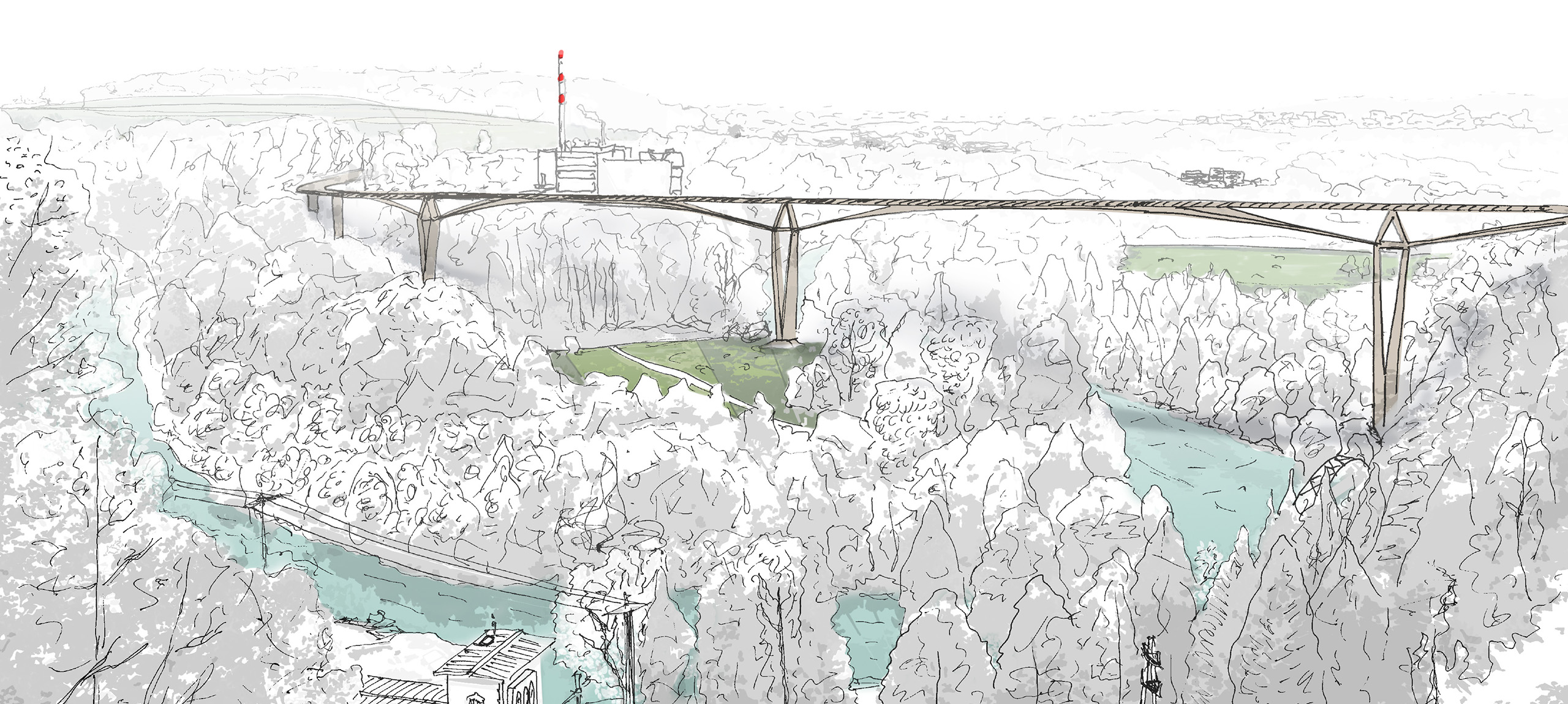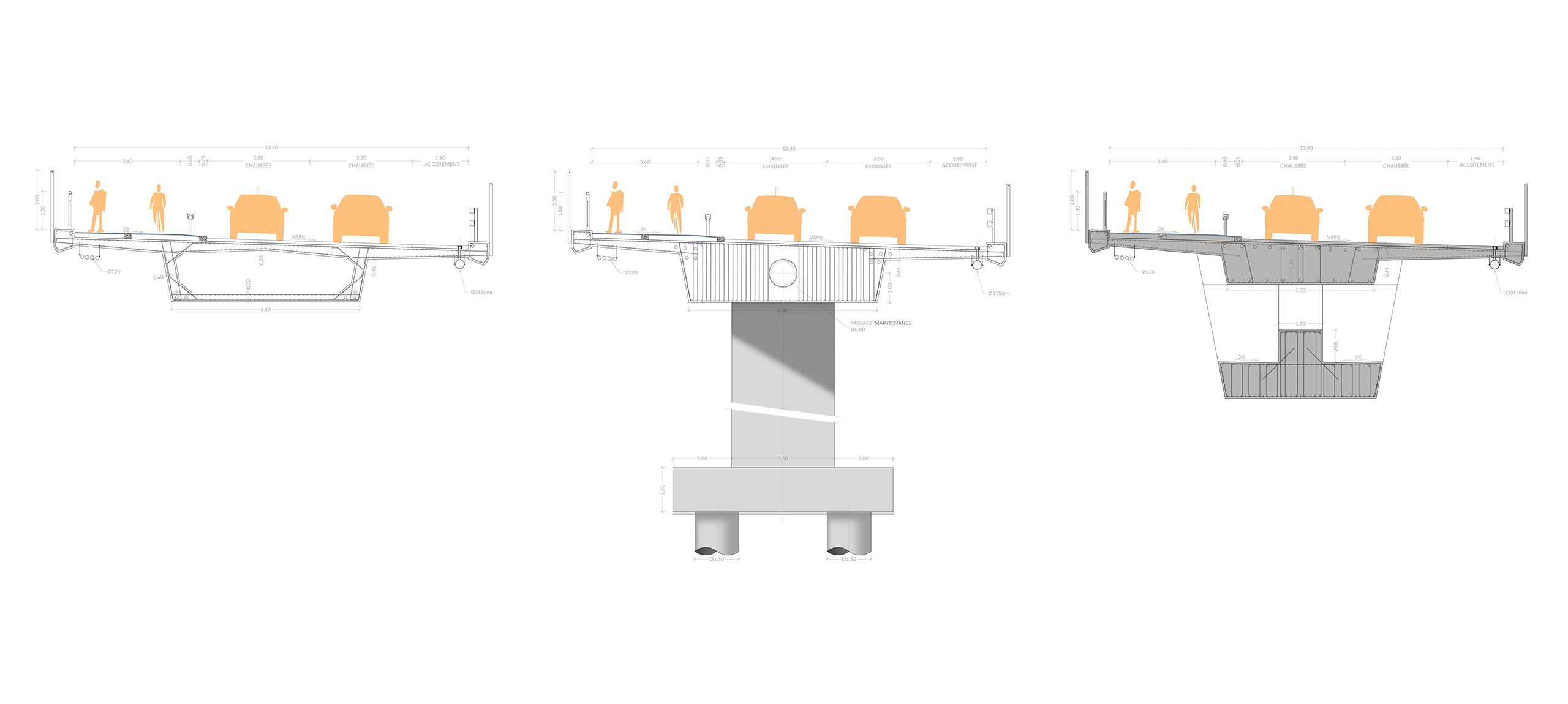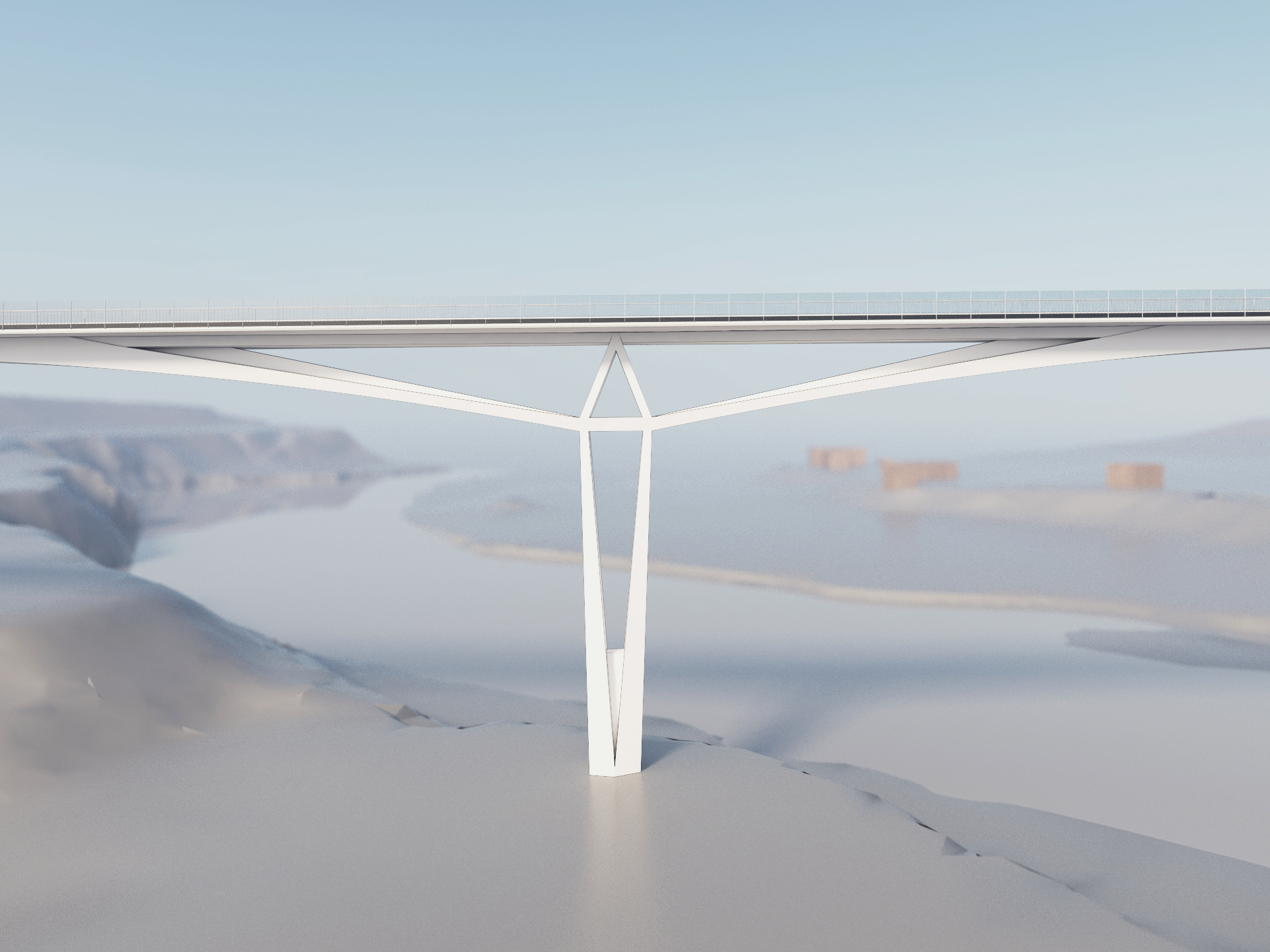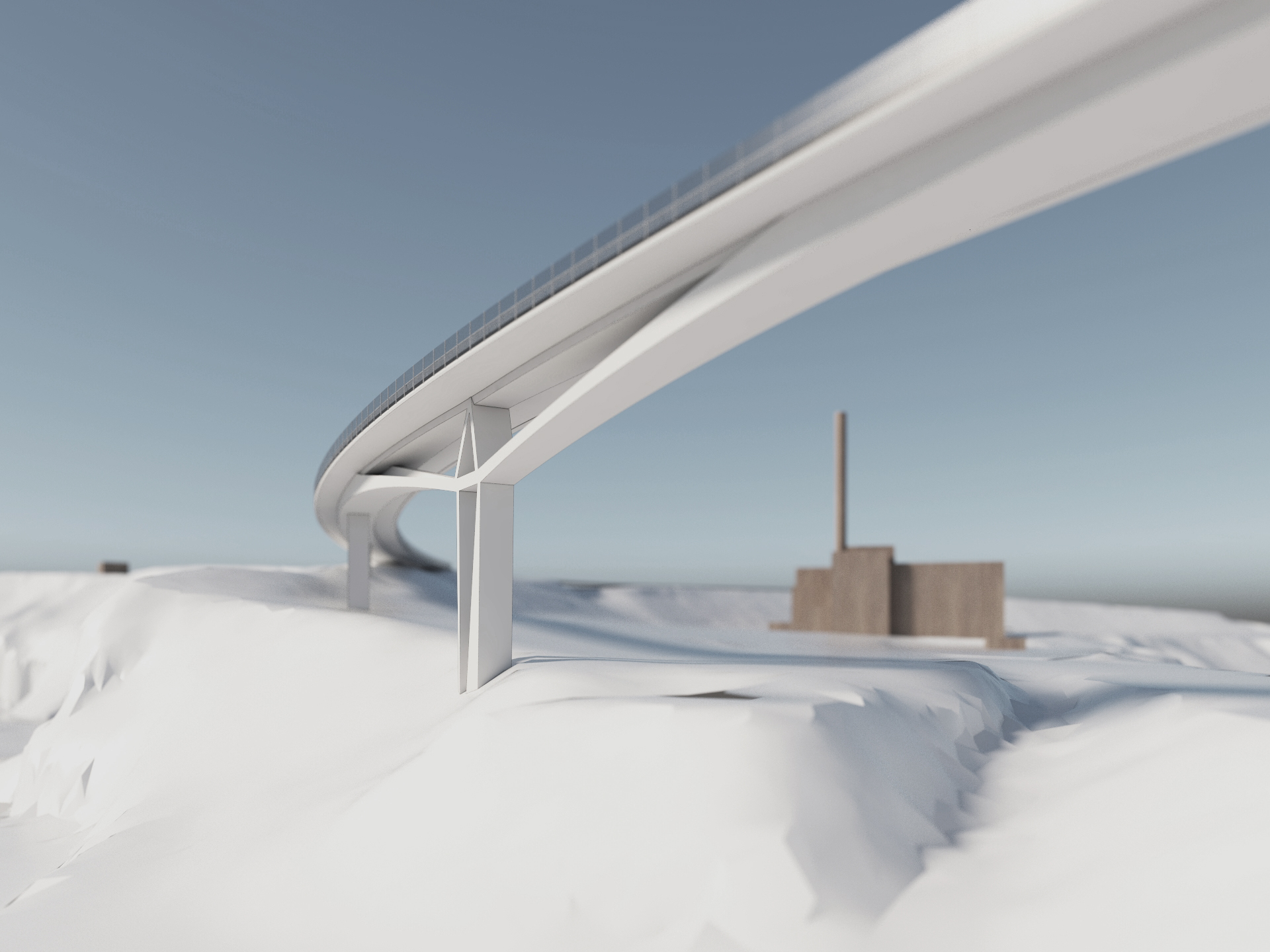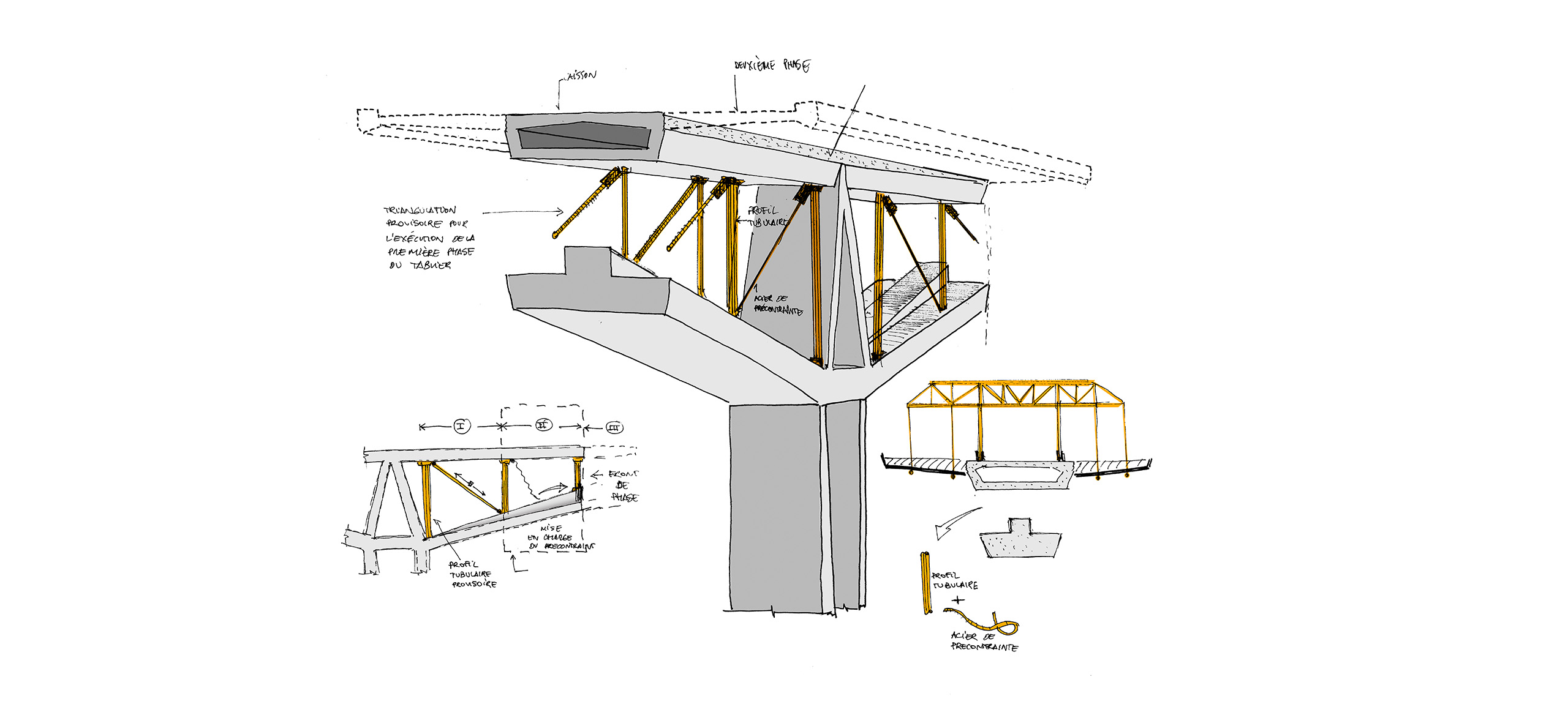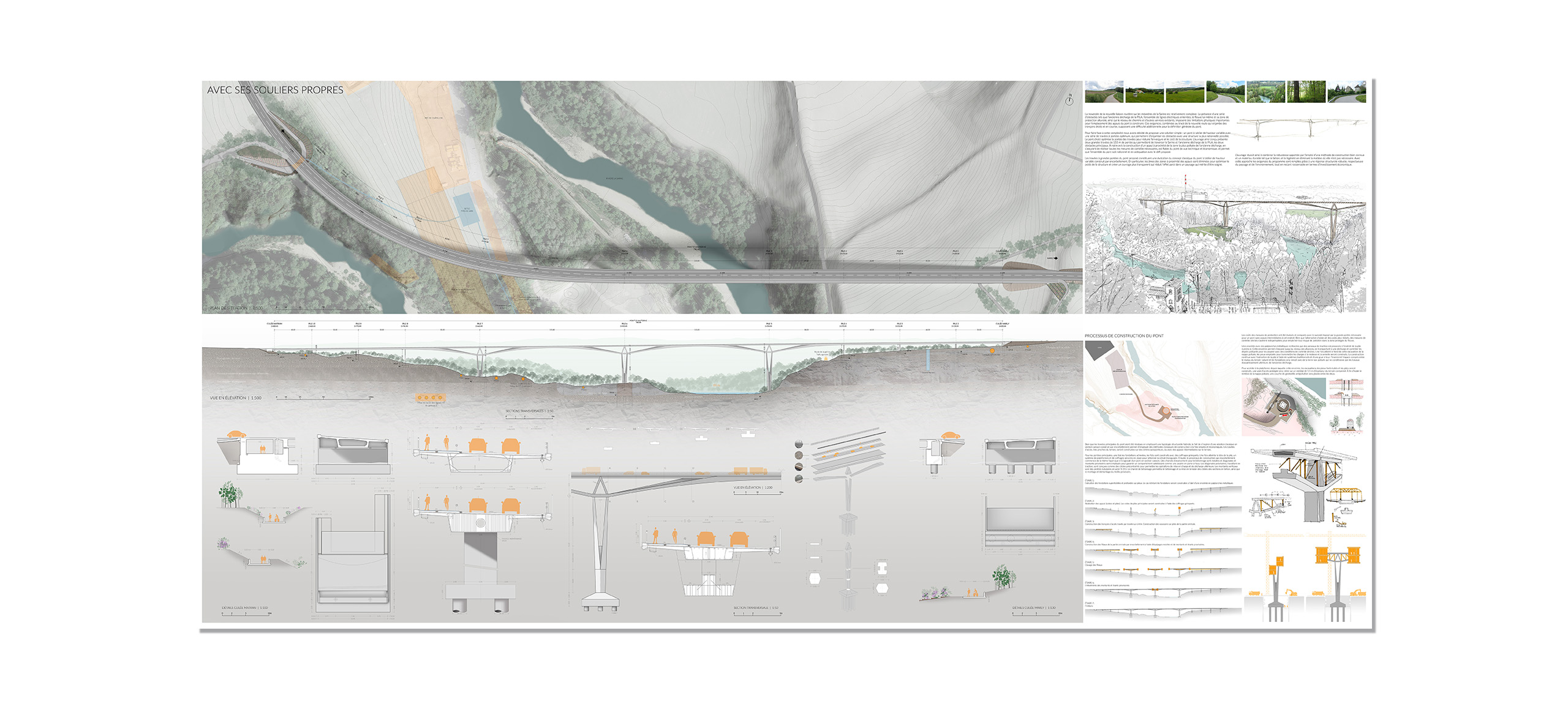|
Hauterive Bridge |
|
Fribourg, Switzerland |
|
|
|
|
|
| Structural typology |
Road & Highway Bridges |
| Date |
March, 2020 |
| Scope |
Tender design |
| Cliente |
Departamento de Carreteras y Puentes Cantón de Friburgo |
| Design |
fhecor |
| Owner |
Cantón de Friburgo |
|
|
|
This project stems from the idea of addressing a serious issue of pedestrian interconnection between different spaces and buildings at the University of La Laguna. The solution, winner of a design competition, was conceived as a system of connections that, at the same time, created a new high-quality urban space. With its circular layout, the project efficiently resolves all pedestrian movements without additional costs. The structure has a U-shaped section, with lateral elements that are larger in the areas where the supports are farther apart, adapting to functional and structural requirements. The external faces of the deck are folded to improve structural performance and to visually break up the outer faces of the section. The result is a structure that robustly combines the circular body of the walkway with the different access elements, creating a unique urban space: the new plaza at the University of La Laguna.
GENERAL CONCEPT
Faced with such a complex issue, FHECOR was aware that the optimal, ideal solution is rather utopian. This does not mean adopting a resigned attitude, but quite the opposite. The initial idea was that the goal is to find the best compromise solution among all those that could be considered. From a structural point of view, the proposed solution is essentially a continuous curved beam in the shape of a ring with an outer diameter of 100 meters, supported by a system of point supports located where they least affect roadways and, in principle, existing utilities. It resolves all possible pedestrian movements between the various access points. A circular solution is proposed, which is accessed by several ramps, stairs, and even an elevator, tailored to the specific characteristics of each access.
DESIGN
The walkway deck has a usable width of 3.70 meters and is made of steel. The section is composed of a variable-depth box girder, changing in form to meet existing functional and structural constraints. The greatest depth is always at the ends of the section, reaching a maximum of 2.50 meters, and tapering down to nothing in areas where the walkway opens toward the access points. The structure presents maximum depth on the outer ring in the areas closest to the TF-5 highway, aiming to improve pedestrian comfort by shielding them from traffic noise. Conversely, when the walkway crosses over the roadways, the depth is placed on the inner edge of the ring, thereby protecting users.
The deck is supported by a series of reinforced concrete point supports, located outside the paths of the TF-5 and the tram. This avoids the need for foundations that would affect existing infrastructure. FHECOR’s aesthetic approach when designing a structure is to pay tribute to beauty through sobriety and structural honesty, with no concessions to the superfluous and respect for the pre-existing. This approach, perhaps simple because it aligns with the aforementioned Platonic view of beauty as “the radiance of truth,” is essentially sincere. It is not about creating a sculpture: it is about defining a walkway whose purpose is to provide a functional crossing in the best possible operational conditions. Certainly, in an advanced society like the one we aspire to in Spain, and in a setting like Tenerife—which hosts major works of architecture—it becomes essential that the structure should include aesthetics, that it should express artistic value that adds a meaningful dimension to its function. This gives the structure what is often called “heritage value,” a term that may be vague in quantitative terms but is clearly understood in qualitative ones.
A couple more considerations. The first is related to an additional quality desired in the solution: that it be compact—meaning enclosed, without recesses, with minimal exposed surface. The second is the symbolic value of the circle, a geometric figure with special magnetism, especially when overlaid on another conic shape like the ellipse of the current roundabout. However, before diving into symbolism, it is worth remembering that the circular shape is justified by its ability to resolve all possible links, as is the case with traditional roundabouts, which have become widespread at our intersections since the 1990s, and whose functional success seems indisputable. Still, the symbolic reasons are unavoidable: the perfection of the circle, which has no beginning or end, no hierarchy or precedence—yet allows rich perspectives of the distant landscape, the nearby surroundings, the central roundabout presided over by the statue of Padre Anchieta, and, why not, the structure itself.
The circular shape, in short, gives the whole a continuous geometric space with great visual dynamism. As noted earlier, this is about more than solving a functional problem: it is also about creating and organizing a recognizable space with strong plasticity, yet a sober formal approach. One of the goals of the project is to create a work that endures over time. That is why a compact solution has been chosen—one that does not require special finishes, since the structure itself defines the urban space created.
Because it is a metallic structure, the project must incorporate details to prevent moisture or dirt buildup that could affect both durability and appearance. A drainage system adapted to the geometry of the structure has been proposed.
EPITOME
The proposed design addresses the pedestrian crossings and routes specified in the competition brief, as well as any other possible routes. The circular-plan walkway offers great flexibility from a functional perspective thanks to its multiple access points. The concept prioritizes the comfort of pedestrians and cyclists without compromising the vehicular capacity of the roundabout. Function and form come together here to give rise to a structure that unites structural efficiency, cost-effectiveness, and aesthetic quality, which we believe will meet the expectations of the Cabildo of Tenerife and future users of this work.
